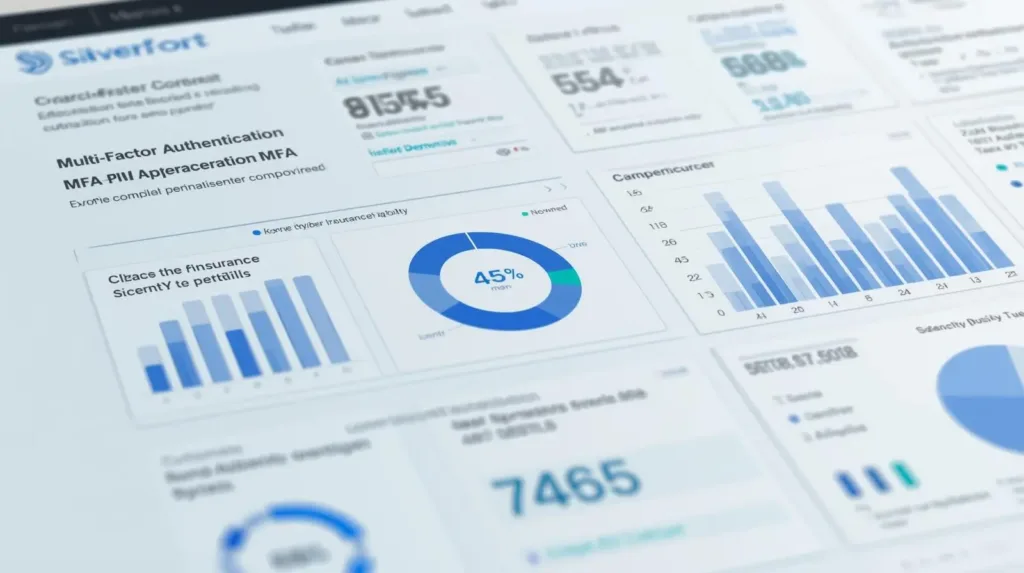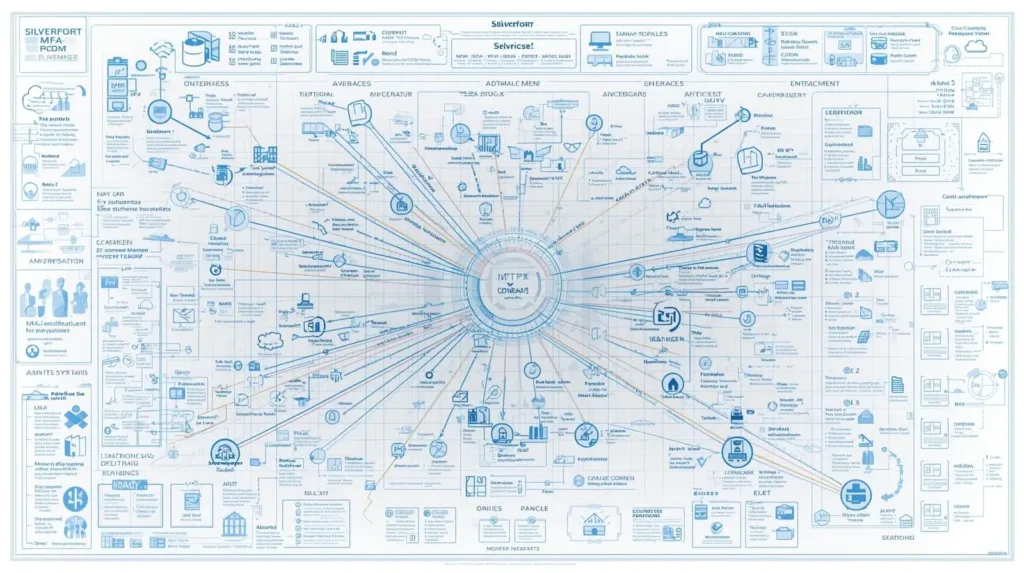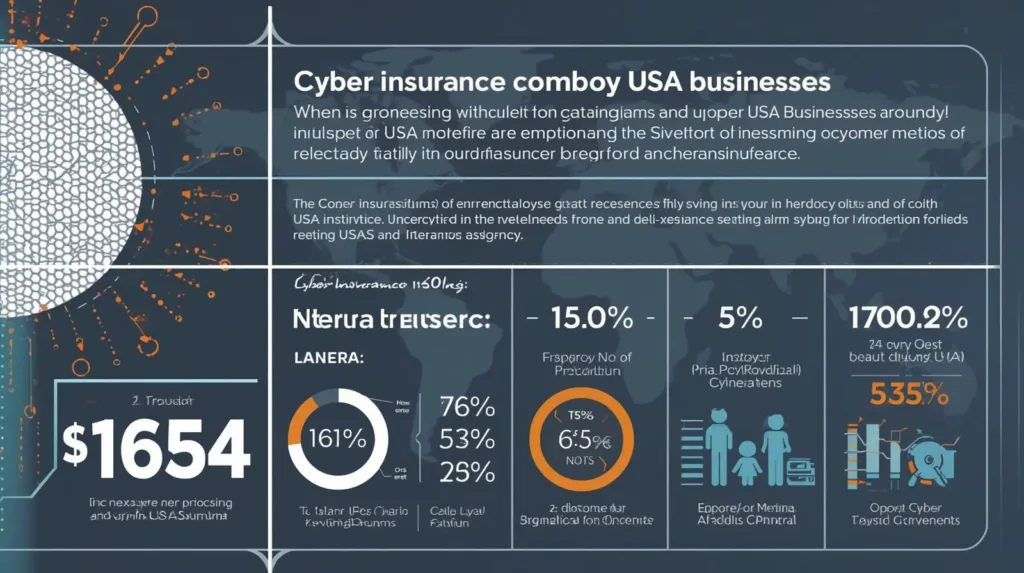Why Cyber Insurance Matters More Than Ever in 2025
In today’s digital landscape, cyberattacks are not just a possibility—they’re a probability. For businesses in the USA, cyber insurance has become a critical safety net, covering losses from data breaches, ransomware, and more. But securing that coverage isn’t straightforward. Insurers are tightening requirements, demanding robust security measures like multi-factor authentication (MFA) across all systems.
Enter Silverfort, an innovative identity security platform that’s revolutionizing how companies meet these demands. By extending MFA to legacy systems, uncovering hidden risks, and ensuring comprehensive compliance, Silverfort helps businesses not only qualify for cyber insurance but also potentially lower premiums. This article dives deep into cyber insurance coverage with Silverfort in the USA, blending fresh 2025 insights with practical advice to keep you informed and protected.
Whether you’re a small business owner, IT director, or risk manager, understanding this intersection of technology and insurance could save your organization millions. Let’s explore how Silverfort is making cyber insurance more accessible and effective.

What is Cyber Insurance? A Quick Primer for USA Businesses
Cyber insurance, also known as cyber liability insurance, protects companies from financial fallout due to cyber incidents. In the USA, policies typically cover:
- Data Breach Response: Costs for notifying affected parties, credit monitoring, and public relations.
- Business Interruption: Lost income during downtime caused by attacks.
- Ransomware Payments: In some cases, reimbursement for extortion demands.
- Legal and Regulatory Fines: Expenses from lawsuits or compliance violations like GDPR or CCPA.
According to Munich Re, the global cyber insurance market is projected to hit $16.3 billion in 2025, with the USA leading the charge due to high-profile breaches. Premiums have stabilized after spikes in previous years, but insurers now require proof of strong cybersecurity postures to offer coverage or favorable rates.
Silverfort plays a pivotal role here by addressing one of the biggest hurdles: identity security. Without it, many businesses struggle to comply, leading to denied claims or higher costs.
Silverfort: The Identity Security Powerhouse Enhancing Cyber Coverage
Silverfort is a USA-based cybersecurity company specializing in identity threat detection and response (ITDR). Its platform unifies protection across hybrid environments, including on-premises, cloud, and legacy systems—areas often overlooked by traditional MFA solutions.
Key Features of Silverfort for Cyber Insurance Compliance
- Universal MFA Enforcement: Applies MFA to every access point, including command-line interfaces, service accounts, and outdated apps that insurers scrutinize.
- Risk Discovery: Automatically identifies shadow admins, dormant accounts, and weak passwords, closing gaps that could void insurance policies.
- Real-Time Threat Response: Uses AI to block suspicious activities, providing auditable logs for insurance audits.
- Seamless Integration: Works with existing tools like Microsoft Active Directory, reducing implementation time to meet tight insurance deadlines.
In a case study, a national grocery retailer used Silverfort to extend MFA to legacy systems, uncovering thousands of hidden accounts and securing their policy renewal just in time. This not only ensured compliance but also demonstrated proactive risk management to insurers.

How Silverfort Helps Secure Better Cyber Insurance Rates
Implementing Silverfort can directly impact your cyber insurance outcomes. Here’s how:
Step-by-Step Compliance Process
- Assessment: Silverfort scans your environment to identify MFA gaps, often revealing vulnerabilities in legacy systems.
- Implementation: Deploy in weeks, not months, with no agents or proxies needed.
- Documentation: Generate reports showing full MFA coverage, essential for insurance applications.
- Ongoing Monitoring: Real-time alerts ensure continuous compliance, preventing policy lapses.
Businesses using Silverfort report up to 30-40% premium reductions by demonstrating lower risk profiles. For USA firms, this aligns with frameworks like NIST and CMMC, further strengthening your case.
Case Studies from USA Companies
- Retail Giant: Faced a policy deadline; Silverfort extended MFA, closed security gaps, and secured coverage.
- Financial Services Firm: Integrated Silverfort to protect service accounts, reducing breach risks and qualifying for enhanced limits.
- Healthcare Provider: Met HIPAA requirements via identity unification, avoiding fines and insurance hikes.
These real-world examples show Silverfort’s practical value in the USA market.
Limitations and Alternatives: Is Silverfort Right for You?
While Silverfort shines in identity security, it’s not without limitations. It focuses primarily on MFA and ITDR, so businesses may need complementary tools for endpoint protection or SIEM.
Alternatives include:
- Okta: Strong in cloud MFA but lacks legacy support.
- Ping Identity: Good for federation, but implementation can be complex.
- Datawiza: Offers similar access management with a focus on zero-trust.
For comprehensive coverage, pair Silverfort with insurers like Hotaling or Woodruff Sawyer, who specialize in cyber policies. Evaluate based on your USA-specific needs, such as state regulations in California or New York.
Cost Considerations: Investing in Silverfort for Long-Term Savings
Silverfort’s pricing is subscription-based, scaling with users and features—typically $10-50 per user/month. While upfront costs exist, ROI comes from:
- Reduced premiums: Up to 40% savings.
- Avoided breaches: Average USA data breach costs $9.44 million in 2024.
- Compliance efficiency: Quick deployment minimizes consulting fees.
In 2025, with market growth, early adopters like those using Silverfort could see even greater returns as insurers reward advanced security.
Integrating Silverfort with Your Cyber Insurance Strategy
To maximize benefits:
- Work with Brokers: Collaborate with experts like Marsh for tailored policies.
- Conduct Audits: Use Silverfort’s tools for pre-insurance assessments.
- Train Teams: Ensure staff understands identity risks to maintain coverage.
- Monitor Trends: Stay updated on threats like AI-powered attacks.
This integrated approach turns cyber insurance from a cost into a strategic asset.

FAQ: Common Questions on Cyber Insurance Coverage with Silverfort in the USA
What does cyber insurance typically cover?
It includes data breach response, business interruption, and legal fees. Silverfort enhances eligibility by ensuring MFA compliance.
How does Silverfort help with 2025 MFA requirements?
Silverfort extends MFA to all resources, including legacy systems, meeting insurer mandates for universal coverage.
Are there free cyber insurance options with Silverfort?
Some partnerships offer complimentary coverage tiers, but full policies require premiums. Check with providers like Hotaling.
What’s the average cost of cyber insurance in the USA?
Premiums range from $1,000-$50,000 annually, depending on size and risk. Silverfort can lower this by proving strong security.
Can small businesses benefit from Silverfort?
Absolutely—its scalable design suits SMBs, helping them afford and qualify for coverage amid rising threats.
How do I get started with Silverfort for insurance compliance?
Visit Silverfort.com for a demo, then align with your insurer for audits.
Conclusion: Secure Your Future with Silverfort and Cyber Insurance
As cyber threats escalate in 2025, combining Silverfort’s identity security with robust insurance isn’t optional—it’s essential for USA businesses. By addressing MFA gaps and providing verifiable compliance, Silverfort not only secures coverage but also fosters resilience.
Don’t wait for a breach. Explore Silverfort today and transform your cyber risk strategy. For more insights, consult authoritative sources like NIST or Munich Re. Your business’s future depends on it.

yanatec.in Best ai for image generation of 2025, New car and bike update, ArtCAM 2018 and tech news, software reviews update.
